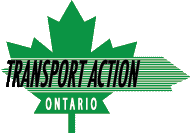By
Transport Action Ontario
|
Intercity Rail and Bus ,
Latest News
Will the Government of Ontario’s wildly optimistic predictions about the benefits of high-speed rail (HSR) actually materialize? The odds are they will not – and here is why. [Click title above to continue reading analysis of Ontario’s HSR proposal]
“High-speed rail’s problems stem mainly from implausibly rosy economic predictions followed by deeply disappointing financial results.”¹
HSR is too often a vanity project on which politicians fixate, believing their ridings must have the service to be part of the 21st century. In this, HSR has often been similar to other politically-motivated mega-projects, such as Toronto’s controversial Union Pearson Express.
According to the Economist, California’s HSR project was to:
“…cost no more than $33 billion, with the federal government stumping up $3.2 billion and private investors chipping in the balance. So far, such private investors have been conspicuous by their absence…. Meanwhile, the overall cost of the project had soared to $98 billion. And instead of going into service by the end of the decade, the high-speed railway would not be ready until 2033.”²
Even in countries where HSR is applicable and has proved successful, there have been problems.
“Others estimate that Japan’s equally illustrious HSR system has added more than 10 percent to the national debt, while cost overruns in Korea have surged into the 300 percent range.”¹
Is this what we want to happen in Ontario in order to satisfy the cravings of politicians seeking re-election? What of the legitimate transportation needs of the voters who pay for these projects?
The major problems with Ontario’s HSR plan include:
- It would not run at true high speeds until it got west of Kitchener. Between there and Toronto, it would run on the existing GO line at speeds of no more than 160 km/hour.
- The proposed HSR trains require high platforms, which will make expensive station duplication necessary to handle both the high-level HSR and low-level GO trains.
- The service would not be part of a well-planned network, lacking the necessary traffic from feeder rail, bus and transit services.
- Unless properly integrated and funded, HSR will help to destroy the remnants of the VIA Rail and Greyhound services in Southwestern Ontario, siphoning off the traffic to and from the major centres served by HSR.
- HSR would bypass communities on the two existing Toronto-London passenger lines, including Brampton, which will have a population of about 700,000 when it will supposedly start. HSR would also bypass Stratford, St. Marys, Oakville, Burlington, Brantford, Woodstock and Ingersoll.
Has the province done any real surveys and studies of the benefits and costs of the proposed system? In most other jurisdictions where HSR has been built, the costs escalated drastically, while the benefits did not meet the optimistic predictions.
The much quicker, equally effective and more affordable solution to Southwestern Ontario’s growing transportation problem is high-performance rail (HPR), which is in daily operation on comparable rail corridors around the world, including the U.S.
HPR includes major improvements to the existing infrastructure, new trains and revisions to the fare structure to provide a fast, frequent and affordable service that can be running in less than half the time of HSR and at much lower cost. It is implemented incrementally, providing improvements the public can use every step of the way before it reaches its final build-out.
HPR’s multiple benefits are outlined in Transport Action Ontario’s This is High-Performance Rail
This is the course of urgent action Transport Action Ontario advocates. Pursuing HSR after several failed attempts stretching back nearly 40 years will only lead to further deterioration of our public transportation system, the competitiveness of our economy and our quality of life. We cannot afford to waste more time and money on another “gee-whiz” scheme that is, at best, a pre-election vote chaser.
Robert Wightman
President
Transport Action Ontario
July 19, 2017
1 http://www.aei.org/publication/the-real-problem-with-high-speed-rail/
2 https://www.economist.com/news/science-and-technology/21695237-taxpayers-could-pay-dearly-californias- high-speed-dreams-biting-bullet
A related press release is to be found in the Publications/Press Releases section of this website.
To download this document click here.

